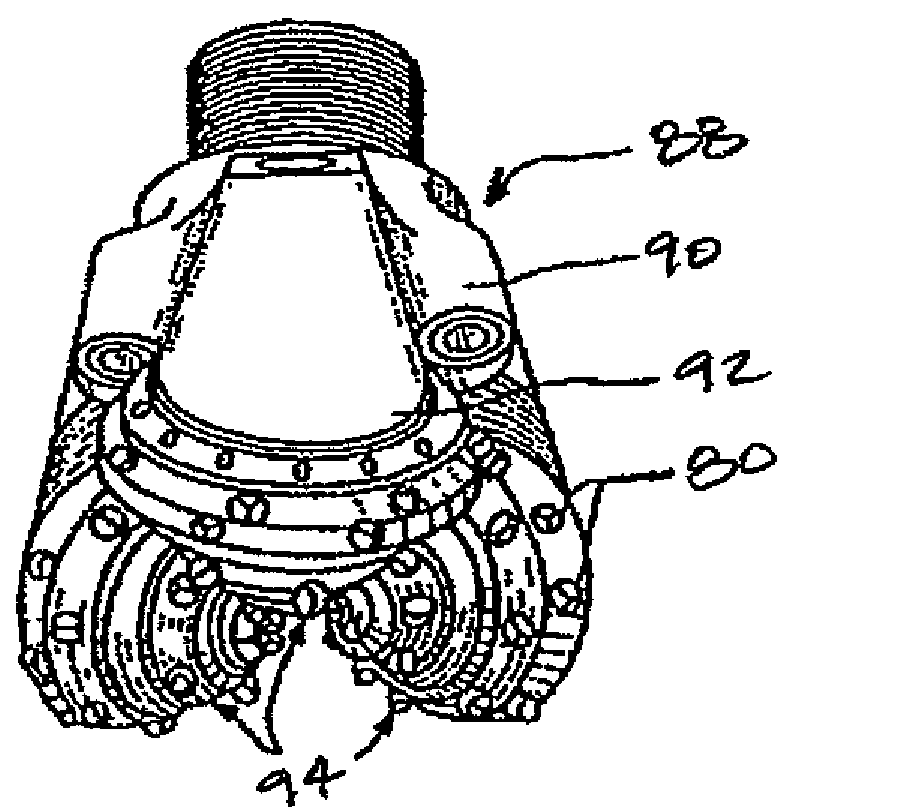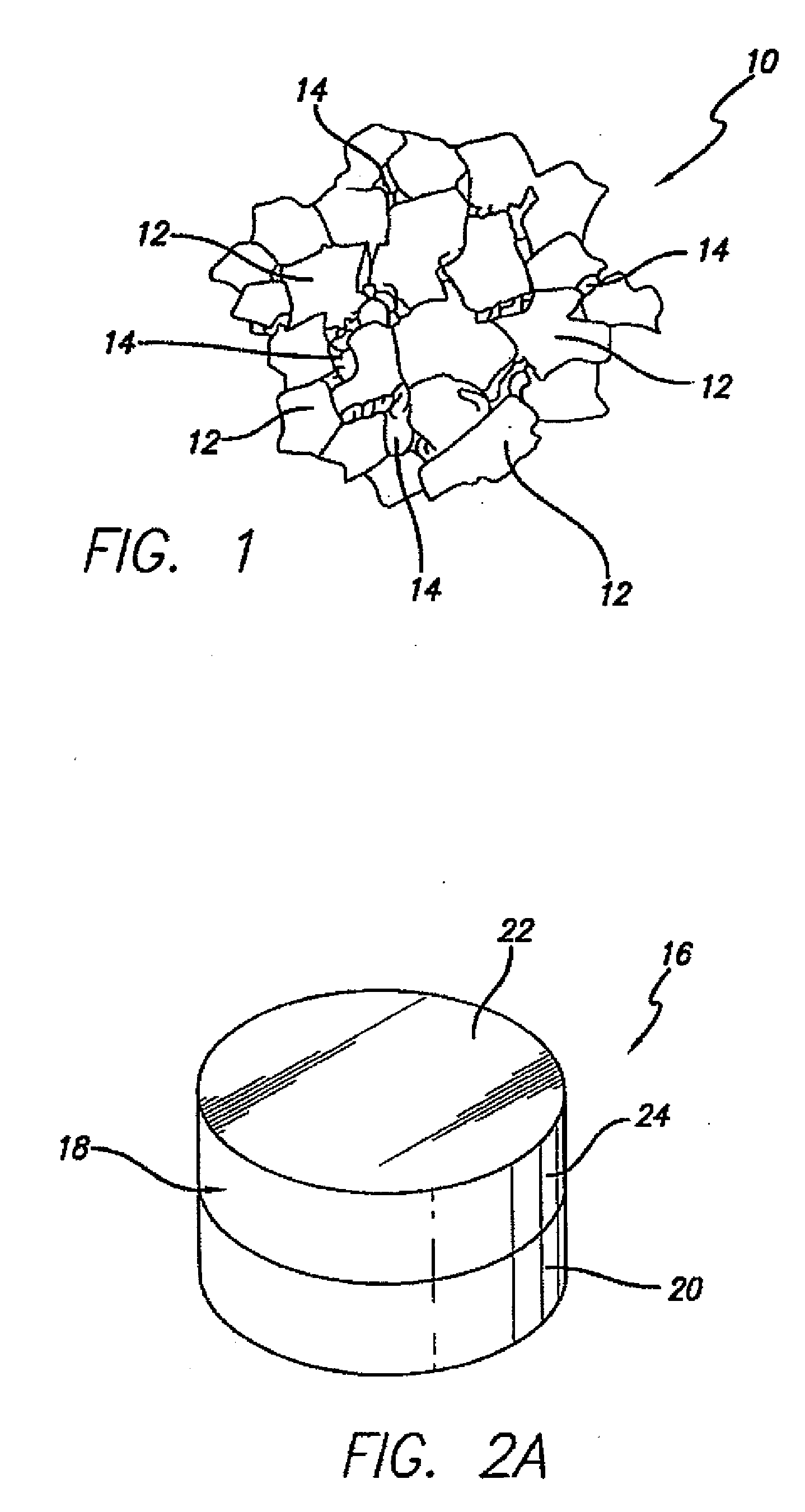Diamond-bonded constrcutions with improved thermal and mechanical properties
a technology of diamond-to-diamond bonding and thermal and mechanical properties, which is applied in the field of diamond-to-diamond bonding, can solve the problems of thermal degradation, cracks and chips in the pcd structure, and ruptures in the diamond-to-diamond bonding, and achieve the effects of improving mechanical properties, improving thermal characteristics and thermal stability, and improving fracture toughness and impact strength
- Summary
- Abstract
- Description
- Claims
- Application Information
AI Technical Summary
Benefits of technology
Problems solved by technology
Method used
Image
Examples
example 1
Diamond-Bonded Construction by Partial Leaching
[0113]Synthetic diamond powder having an average grain size of approximately 2 to 50 micrometers is mixed together for a period of approximately 2-6 hours by ball milling. The resulting mixture is cleaned by heating to a temperature in excess of 850° C. under vacuum. The mixture is loaded into a refractory metal container. A WC-Co substrate is positioned adjacent a surface of the diamond powder volume. The container is surrounded by pressed salt (NaCl) and this arrangement is placed within a graphite heating element. This graphite heating element containing the pressed salt and the diamond powder and substrate encapsulated in the refractory container is loaded into a vessel made of a high pressure / high temperature self-sealing powdered ceramic material formed by cold pressing into a suitable shape.
[0114]The self-sealing powdered ceramic vessel is placed in a hydraulic press having one or more rams that press anvils into a central cavity...
example 2
Diamond-Bonded Construction by Complete Leaching
[0117]A PCD body was prepared in the same manner described above in Example 1. The entire diamond-bonded PCD body is treated by acid leaching to remove the catalyst material, i.e., Cobalt, therefrom. Before the body is treated, the substrate is removed to facilitate the process of removing the catalyst material therefrom. After the leaching treatment is completed, the treated diamond-bonded body is loaded into the HPHT device and a infiltrant material comprising a Ti, Cu, Ni disk is positioned adjacent a first region of the body and a WC-Co substrate is positioned adjacent a second region of the body.
[0118]The HPHT device is operated to impose approximately 5,500 MPa and approximately 1,100° C. for a period of approximately 2 minutes. During which time the infiltrant material melts and infiltrates into the first region of the diamond body to fill the empty voids and pores existing therein, and the Ti reacts with the diamond crystals to...
PUM
| Property | Measurement | Unit |
|---|---|---|
| thickness | aaaaa | aaaaa |
| thickness | aaaaa | aaaaa |
| thickness | aaaaa | aaaaa |
Abstract
Description
Claims
Application Information
 Login to View More
Login to View More - R&D
- Intellectual Property
- Life Sciences
- Materials
- Tech Scout
- Unparalleled Data Quality
- Higher Quality Content
- 60% Fewer Hallucinations
Browse by: Latest US Patents, China's latest patents, Technical Efficacy Thesaurus, Application Domain, Technology Topic, Popular Technical Reports.
© 2025 PatSnap. All rights reserved.Legal|Privacy policy|Modern Slavery Act Transparency Statement|Sitemap|About US| Contact US: help@patsnap.com



